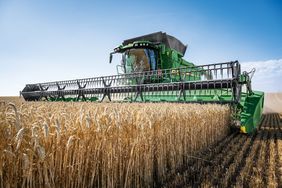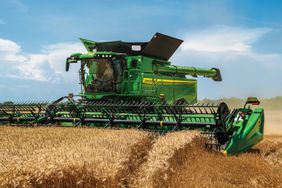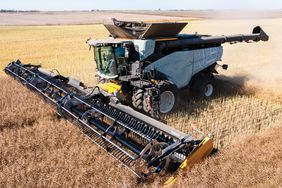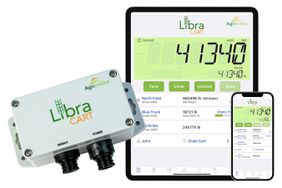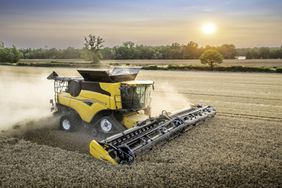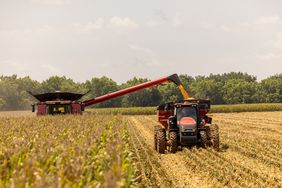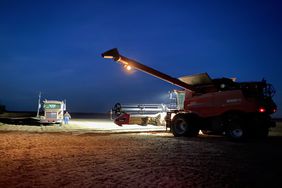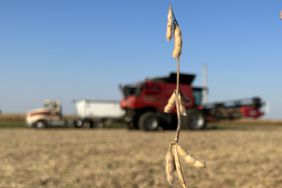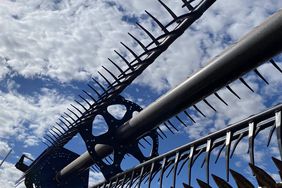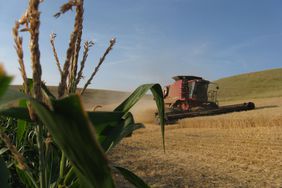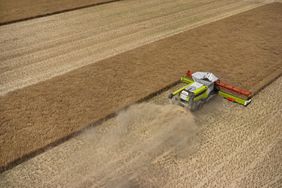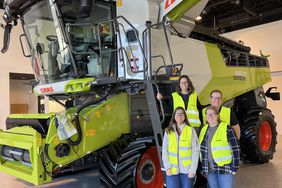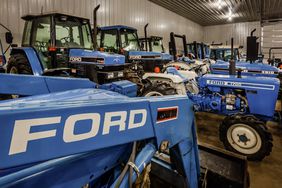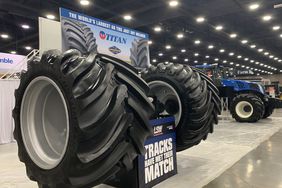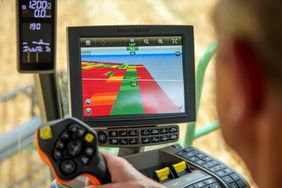:max_bytes(150000):strip_icc()/img_564f681ebb9d8_51232-d54b5df8170240ea9fab55f56000eca3.jpg)
During harvest, it's tempting to push your combine to its limit to maximize the amount of acres you cover. The only downside to this approach is when that limit is exceeded and the combine gets plugged, which in the end doesn't save you any time. Claas has a new monitoring system that should help you walk that fine line.
The Claas automatic crop flow monitoring system (shown above) for the Lexion 700 watches the rotational speeds on the engine, the APS threshing mechanism, and the Roto Plus residual grain separation. The system alerts you if the machine settings aren't ideal and you are having crop flow problems, so you can make adjustments to run at the optimum level.
"The system measures the slip between the threshing system at the rotor and the engine," says Stefan Terorde with Claas. "If there is too much slip, we stop the header so the material can be pulled out."
What happens when the machine has too much material and ends up plugging anyway? The header automatically shuts down, limiting the amount of material in the feederhouse. "It is much easier to unplug this way and you save the drives," explains Terorde.
4D cleaning
The crop flow monitoring system isn't the only new addition to the Lexion 700. The combines will now be available with an optional 4D cleaning system.
3D cleaning, offered on current Lexion machines, compensates for combine tilt on hills with active control of the upper sieve that reduces matting. 4D takes this one step further.
"In hilly conditions, 4D puts material from the separation on the cleaning system only on the uphill side. This makes the material more even on the cleaning system, which saves power," explains Terorde. "It does this by closing the rotor flaps on the downhill side and opening flaps on the hillside."
4D will be optional for Lexion combines because the system only makes sense for farms with rolling terrain and hills.
Field route optimizer
The Claas field route optimizer was also released at this year's Agritechnica. Offered through 365FarmNet, a farm management system platform not yet available in the states, the system maps the most efficient route through fields.
You simply select the field and the machine you are using, which automatically populates the working width. You then choose the headland width, depending on the number of passes; headland speed; and working speed. With that information, the system shows the best route through the field, including the A/B lines. At this point, you have to enter the A/B coordinates into your auto guidance system. "In the future, we are hoping this will be more automatic," says Isabell Mayer with 365FarmNet.
While the system isn't available in the states yet, the technology has great potential for improving fieldwork efficiency. "On average, processing time is reduced by 6%," says Josef Maier with Claas.
:max_bytes(150000):strip_icc()/Jessie-Scott-e5d5c2e8613948b4a0b503787be9d971.jpg)
